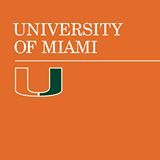预约演示
更新于:2025-07-25
Aldesleukin(Assistance Publique Hopitaux De Paris)
更新于:2025-07-25
概要
基本信息
非在研机构- |
最高研发阶段临床2期 |
首次获批日期- |
最高研发阶段(中国)- |
特殊审评孤儿药 (美国) |
登录后查看时间轴
结构/序列
Sequence Code 720

当前序列信息引自: *****
关联
12
项与 Aldesleukin(Assistance Publique Hopitaux De Paris) 相关的临床试验CTIS2023-510297-14-00
Safety and efficacy of low-dose interleukin-2 therapy in chronic inflammatory barrier diseases (IL-2-ID): a single-center, randomized, double-blind and placebo-controlled phase 2 clinical basket trial - EXC2167-5
开始日期2024-04-04 |
申办/合作机构- |
NCT03243058
A Randomized, Double Blind, Phase I/II Trial of Low-Dose Interlekin-2 Immunotherapy in Established Type 1 Diabetes
Randomized, controlled, double-blinded, multicenter, phase I/II clinical trial to evaluate the safety of low-dose IL-2 and determine whether low-dose IL-2 therapy for one year, can prevent further loss of beta-cell function in patients with established T1D, (primary outcome). The study will carefully examine various effects of low-dose IL-2 on the immune system in patients with T1D, including effects on Treg and other cell subsets, and disease-specific autoimmune responses.
开始日期2023-06-01 |
申办/合作机构  University of Miami University of Miami [+3] |
NCT05153070
Clinical and Biological Responses to Repeated Administration of Low-dose Interleukin-2 in Patients With Type 1 Diabetes and a Residual Insulin Secretion
Type 1 diabetes (T1D) is caused by the destruction of insulin-producing cells by effector T cells (Teffs), due to a deficiency of regulatory T cells (Tregs).
Ciclosporin effectively blocks the Teffs and controls diabetes, but cannot be considered as a long-term treatment. Low-dose interleukin-2 (ld IL-2) activates and expands Tregs in humans.
Hence, Ld IL-2 in patients in whom the autoimmune process was blocked early by a short treatment (2 months) of cyclosporine should restore immune homeostasis and maintain some insulin production over the long term.
Ciclosporin effectively blocks the Teffs and controls diabetes, but cannot be considered as a long-term treatment. Low-dose interleukin-2 (ld IL-2) activates and expands Tregs in humans.
Hence, Ld IL-2 in patients in whom the autoimmune process was blocked early by a short treatment (2 months) of cyclosporine should restore immune homeostasis and maintain some insulin production over the long term.
开始日期2022-09-21 |
申办/合作机构 |
100 项与 Aldesleukin(Assistance Publique Hopitaux De Paris) 相关的临床结果
登录后查看更多信息
100 项与 Aldesleukin(Assistance Publique Hopitaux De Paris) 相关的转化医学
登录后查看更多信息
100 项与 Aldesleukin(Assistance Publique Hopitaux De Paris) 相关的专利(医药)
登录后查看更多信息
21
项与 Aldesleukin(Assistance Publique Hopitaux De Paris) 相关的文献(医药)2025-06-01·Nature cardiovascular research
Low-dose interleukin-2 induces clonal expansion of BACH2-repressed effector regulatory T cells following acute coronary syndrome.
Article
作者: Clatworthy, M R ; Lu, Y ; Tuong, Z K ; Mallat, Z ; Zhao, X ; Weng, Y ; Charlier, F T W ; Case, A G ; Zhao, T X ; O'Brien, J W ; Cheriyan, J ; Sriranjan, R ; Masters, L ; Kemper, C
Targeting inflammation in atherosclerotic cardiovascular disease remains a major unmet need. Low-dose interleukin-2 (IL-2LD) selectively increases regulatory T (Treg) cell numbers in patients with coronary artery disease. Here we combine single-cell transcriptomics and T cell receptor analyses and show that IL-2LD clonally expands effector Treg cells in patients with acute coronary syndromes. The clonally expanded Treg cells upregulate key immunosuppressive and metabolic pathways and show an increased number of predicted ligand-receptor interactions. These Treg cells also display similar predicted antigen specificities, which cluster with published sequences specific to atherosclerotic cardiovascular disease. By tracking the T cell receptors of single cells over time, we identify an inflammatory polarization of the T cell compartment after myocardial infarction, which is restrained by IL-2LD. We identify BACH2 as a repressor of the Treg effector program. However, BACH2-mediated regulation is bypassed with IL-2LD. Overall, these results lend insight into the IL-2-driven clonal expansion program in human Treg cells, with important therapeutic implications for patients with cardiovascular and other immune-mediated diseases.
2025-05-01·LANCET
Efficacy and safety of low-dose IL-2 as an add-on therapy to riluzole (MIROCALS): a phase 2b, double-blind, randomised, placebo-controlled trial
Article
作者: Masseguin, Christophe ; Debs, Rabab ; Ealing, John ; Juntas-Morales, Raul ; Verber, Nick ; Kolev, Ivan ; Pham, Hang-Phuong ; Bell, Simon M ; Malaspina, Andrea ; Couratier, Philippe ; Shaw, Pamela J ; Bensimon, Gilbert ; Saker-Delye, Safaa ; Verschueren, Annie ; Desnuelle, Claude ; Le Forestier, Nadine ; Pageot, Nicolas ; Zetterberg, Henrik ; Corcia, Philippe ; Sreedharan, Jemeen ; Salachas, François ; Muller, Claudie ; Amador, Maria D M ; McDermott, Christopher J ; Corvol, Jean-Christophe ; Fleury, Marie-Céline ; Tree, Timothy ; Gorrie, George H ; Lautrette, Géraldine ; Locati, Massimo ; Klaassen, Pieter ; Bernard, Emilien ; Camu, William ; Danel, Véronique ; Yildiz, Ozlem ; Esselin, Florence ; Al Khleifat, Ahmad ; Hesters, Adèle ; Al-Chalabi, Ammar ; Attarian, Shahram ; Suehs, Carey M ; Hajduchova, Hana ; Grapperon, Aude-Marie ; Payan, Christine Am ; Dimitriou, Aikaterini ; Beltran, Stéphane ; Soriani, Marie-Hélène ; Asselain, Bernard ; Kirby, Janine ; Garlanda, Cecilia ; Sharma, Nikhil ; Leigh, P Nigel ; Svahn, Juliette
BACKGROUND:
Amyotrophic lateral sclerosis (ALS) is a life-threatening disease characterised by progressive loss of motor neurons with few therapeutic options. The MIROCALS study tested the hypothesis that low-dose interleukin-2 (IL-2LD) improves survival and function in ALS.
METHODS:
In this randomised, double-blind, placebo-controlled trial, male and female riluzole-naive participants, with either a possible, laboratory-supported probable, probable, or definite ALS diagnosis (revised El Escorial criteria), aged 18-76 years, with symptom duration of 24 months or fewer, and slow vital capacity of 70% or more, underwent a riluzole-only 12-18 week run-in period before randomisation in a 1:1 ratio to either 2 million international units (MIU) IL-2LD or placebo by subcutaneous injection daily for 5 days every 28 days over 18 months. The primary endpoint was survival at 640 days (21 months). Secondary outcomes included safety, ALS Functional Rating Scale-Revised (ALSFRS-R) score, and biomarker measurements including regulatory T-cells (Tregs), cerebrospinal fluid (CSF)-phosphorylated-neurofilament heavy-chain (CSF-pNFH), and plasma and CSF-chemokine ligand 2 (CCL2). The primary endpoint analysis used unadjusted log-rank and Cox's model adjusted analyses using pre-defined prognostic covariates to control for the disease and treatment response heterogeneity. The study was 80% powered to detect a two-fold decrease in the risk of death by the log-rank test in the intention-to-treat (ITT) population, including all randomly allocated participants. MIROCALS is registered with ClinicalTrials.gov (NCT03039673) and is complete.
FINDINGS:
From June 19, 2017, to Oct 16, 2019, 304 participants were screened, of whom 220 (72%) met all criteria for random allocation after the 12-to-18-week run-in period on riluzole. 136 (62%) of participants were male and 84 participants (38%) were female. 25 (11%) of the 220 randomly allocated participants were defined as having possible ALS under El Escorial criteria. At the cutoff date there was no loss to follow-up, and all 220 patients who were randomly allocated were documented as either deceased (90 [41%]) or alive (130 [59%]), so all participants were included in the ITT and safety populations. The primary endpoint unadjusted analysis showed a non-significant 19% decrease in risk of death with IL-2LD (hazard ratio 0·81 [95% CI 0·54-1·22], p=0·33), failing to demonstrate the expected two-fold decrease in risk of death. The analysis of the primary endpoint adjusted on prognostic covariates, all measured at time of random allocation, showed a significant decrease of the risk of death with IL-2LD (0·32 [0·14-0·73], p=0·007), with a significant treatment by CSF-pNFH interaction (1·0003 [1·0001-1·0005], p=0·001). IL-2LD was safe, and significantly increased Tregs and decreased plasma-CCL2 at all timepoints. Stratification on CSF-pNFH levels measured at random allocation showed that IL-2LD was associated with a significant 48% decrease in risk of death (0·52 [0·30-0·89], p=0·016) in the 70% of the population with low (750-3700 pg/mL) CSF-pNFH levels, while in the 21% with high levels (>3700 pg/mL), there was no significant difference (1·37 [0·68-2·75], p=0·38).
INTERPRETATION:
With this treatment schedule, IL-2LD resulted in a non-significant reduction in mortality in the primary unadjusted analysis. However, the difference between the results of unadjusted and adjusted analyses of the primary endpoint emphasises the importance of controlling for disease heterogeneity in ALS randomised controlled trials. The decrease in risk of death achieved by IL-2LD therapy in the trial population with low CSF-pNFH levels requires further investigation of the potential benefit of this therapy in ALS.
FUNDING:
European Commission H2020 Programme; French Health Ministry PHRC2014; and Motor Neurone Disease Association.
2025-02-01·JOURNAL OF ALLERGY AND CLINICAL IMMUNOLOGY
Low-dose IL-2 in birch pollen allergy: A phase-2 randomized double-blind placebo-controlled trial
Article
作者: Bellier, Bertrand ; Lorenzon, Roberta ; Vicaut, Eric ; Rosenzwajg, Michelle ; Chantran, Yannick ; Vicaut, E. ; Gherasim, Alina ; Soria, Angele ; De Blay, Frederic ; Beck, Marine ; de Blay, Frederic ; Klatzmann, David ; Dietsch, Franck ; Domis, Nathalie
BACKGROUND:
Regulatory T (Treg) cells are pivotal in immune tolerance to allergens. Low-dose IL-2 (IL-2LD) activates Treg cells.
OBJECTIVE:
Our aim was to assess IL-2LD efficacy for controlling clinical responses to allergen exposures.
METHODS:
RHINIL-2 was a phase-2a, randomized, double-blind, placebo-controlled trial. Patients with allergic rhinitis to birch pollen (BP) were included; 66% of them had concomitant asthma. All had a total nasal symptom score (TNSS) of 5 or more following nasal exposure to BP in an environmental exposure chamber. Patients received 1 MUI per day of IL-2 (n = 12) or placebo (n = 12) for 5 days, followed by weekly injections for 4 weeks. Clinical responses to subsequent BP exposures in the environmental exposure chamber were evaluated by using TNSS, the rhinitis visual analog scale (VAS), and spirometry. The primary efficacy end point was the difference in TNSS area under the curve (AUC) between inclusion and day 40.
RESULTS:
IL-2LD treatment induced a significant expansion of Treg cells. The difference in TNSS AUC between inclusion and day 40 AUC in the IL-2 and placebo groups was not significant. TNSS and visual analog scale AUCs were significantly reduced from baseline to day 40 in the IL-2LD group only (P = .04 and P = .01, respectively). The ratio of FEV1 to forced vital capacity (FEV1P) and the forced midexpiratory flow (FEF25%-75%) showed improvement in the IL-2LD-treated versus in the groups given placebo at day 40 (P = .04 and P = .04, respectively). However, the short treatment duration used in this study could not have effects on specific IgE or IgG4 levels given their half-life. There were no severe treatment-related adverse events.
CONCLUSION:
IL-2LD is well tolerated in patients with allergy, even in those with asthma, thus clearing the path for further therapeutic development. Our work suggests that Treg cells can safely attenuate an ongoing allergic response. It paves the way for larger studies with longer treatment periods, which are needed to properly evaluate the therapeutic potential of IL-2 in allergy.
2
项与 Aldesleukin(Assistance Publique Hopitaux De Paris) 相关的新闻(医药)2023-03-02
The prevalence of diabetes has been rising over the past few years, which prompts the growing demand for treatment options. The increasing prevalence of Diabetes and the growing research and development activities to develop novel therapies to treat diabetes to drive the market. The companies developing the potential therapies in the last stage of development include Eli Lilly and Company, Daewoong Pharmaceutical, Janssen Biotech, and several others.
LAS VEGAS, March 2, 2023 /PRNewswire/ -- DelveInsight's
'
Diabetes Pipeline Insight – 2023
' report provides comprehensive global coverage of available, marketed, and pipeline diabetes therapies in various stages of clinical development, major pharmaceutical companies are working to advance the pipeline space and future growth potential of the diabetes pipeline domain.
Key Takeaways from the Diabetes Pipeline Report
DelveInsight's diabetes pipeline report depicts a robust space with
200+ active players working to develop
200+ pipeline therapies for diabetes treatment.
Key diabetes companies such as
Daewoong Pharmaceutical, Janssen Biotech, Zealand Pharma, BioRestorative Therapies, Elevian, Oramed Pharmaceuticals, ImCyse, Novo Nordisk, Enthera, Precigen, Inc., Japan Tobacco, Avotres, AstraZeneca, Landos Biopharma, Vertex Pharmaceuticals, REMD Biotherapeutics, Inc., Eledon Pharmaceuticals, Eli Lilly and Company, Novo Nordisk A/S, Diamyd Medical, NextCell Pharma, ViaCyte, Op-T LLC, Dompé Farmaceutici S.p.A, ILTOO Pharma, Throne Biotechnologies, Oramed Pharmaceuticals, Janssen Research & Development, LLC, Jaguar Gene Therapy, SQZ Biotechnologies, Genprex, Inc., CRISPR Therapeutics, Biora Therapeutics, Genprex, Inc., and others are evaluating new diabetes drugs to improve the treatment landscape.
Promising diabetes pipeline therapies in various stages of development include
Enavogliflozin, Golimumab, Dasiglucagon, ThermoStem, rGDF11, IMCY-0098, Insulin icodec, CagriSema, FDC Sema-OW GIP, SemaDapa FDC, ENT-001, AG019, JTT-662, AVT-001, AZD-0186, Cotadutide, LABP-111, VX-880, Encapsulated islet cell program, CPP-1X-T, REMD-477, AT-1501, LY 3209590, Orforglipron, LY3437943, Mazdutide, Peptide YY analogue agonist, GIPR agonist long acting, GIPR Agonist Long Acting II, LY 3493269, NNC0363-0845, Diamyd, ProTrans, VC-02, OPT101, Ladarixin, ILT-101, Stem Cell Educator Therapy, ORMD-0801, Golimumab, JAG301, SQZ TAC research program, VCTX 211, and others.
In
February 2023,
Genprex, Inc. announced that data highlighting the potential of its
gene therapy for Type 1 diabetes was being presented by its research collaborators at the
University of Pittsburgh at the four-day International Conference on Advanced Technologies and Treatments for Diabetes (ATTD 2023).These results were compelling as they demonstrated the potential for this gene therapy to create newly formed beta-like cells that can produce insulin. They also validated earlier studies of this approach in diabetic mouse models that showed restoration of normal blood glucose levels for several months.
In
February 2023,
Provention Bio, Inc. announced the
closing of the $35 million equity investment from
Sanofi US under the previously announced
Co-Promotion Agreement and Securities Purchase Agreement (the "Purchase Agreement").Pursuant to the Purchase Agreement, Sanofi purchased 2,712,497 shares of the Company's common stock, par value $0.0001 per share, at a price of $12.90 per share, representing a total investment of $35 million.
In
January 2023,
iTolerance, Inc. announced it has entered into a
Master Services Agreement (MSA) with the
Diabetes Research Institute (DRI) at the University of Miami Miller School of Medicine, for the advancement of its novel iTOL-100 platform technology as a potential cure for Type 1 Diabetes.
In
November 2022,
Biocon Limited announced the signing of a semi-exclusive partnership
agreement with
Zentiva, a leading pharmaceutical company in Europe, for the commercialization of its vertically integrated, complex formulation,
Liraglutide, a drug-device combination for the treatment and management of Type 2 diabetes and obesity.Under the terms of this agreement, Biocon is responsible for the manufacturing and supply of Liraglutide to Zentiva for its commercialization across 30 countries in Europe. Biocon also retained the right to commercialize this product under its own brand in the region.
In
November 2022, The US
Food and Drug Administration (FDA) approved
Provention Bio's
biologics license application (BLA) for
Tzield (teplizumab-mzwv) to treat type 1 diabetes (T1D) patients. The anti-CD3-directed antibody Tzield aims to delay the onset of Stage 3 T1D in adults and children aged eight years and above who are currently with stage 2 T1D.
Request a sample and discover the recent advances in diabetes drug treatment @
Diabetes Pipeline Report
The diabetes pipeline report provides detailed profiles of pipeline assets, a comparative analysis of clinical and non-clinical stage diabetes drugs, inactive and dormant assets, a comprehensive assessment of driving and restraining factors, and an assessment of opportunities and risks in the diabetes clinical trial landscape.
Diabetes Overview
Diabetes is a chronic disease that occurs when the pancreas does not produce enough insulin or when the body does not use the insulin that is produced effectively. The vast majority of diabetes can be divided into two types: type 1 and type 2. Diabetes symptoms include polyuria, polydipsia, weight loss, sometimes accompanied by polyphagia and blurred vision. Chronic hyperglycemia may also cause growth impairment and susceptibility to certain infections. Diabetes long-term complications include retinopathy, which can lead to vision loss, nephropathy, which can lead to renal failure, peripheral neuropathy, which can lead to foot ulcers, amputations, and Charcot joints, and autonomic neuropathy, which can cause gastrointestinal, genitourinary, and cardiovascular symptoms.
Diabetes is diagnosed through a thorough physical examination, medical history, and a battery of specialized tests. The A1C, or glycated hemoglobin test, is the primary test used to diagnose both type 1 and type 2 diabetes. Diabetes treatment typically consists of diet control, exercise, home blood glucose testing, oral medication, and insulin. Insulin is the primary treatment for type 1 diabetes, and people with type 2 diabetes can be treated with oral medications but may need insulin in some cases.
Find out more about drugs for diabetes @
New Diabetes Drugs
A snapshot of the Diabetes Pipeline Drugs mentioned in the report:
Learn more about the emerging diabetes pipeline therapies @
Diabetes Clinical Trials
Diabetes Therapeutics Assessment
The
diabetes pipeline report proffers an integral view of diabetes emerging novel therapies segmented by stage, product type, molecule type, mechanism of action, and route of administration.
Scope of the Diabetes Pipeline Report
Coverage: Global
Therapeutic Assessment By Product Type: Mono, Combination, Mono/Combination
Therapeutic Assessment By Clinical Stages: Discovery, Pre-clinical, Phase I, Phase II, Phase III
Therapeutics Assessment
By Route of Administration: Oral, Parenteral, Intravenous, Subcutaneous, Topical
Therapeutics Assessment
By Molecule Type: Monoclonal Antibody, Peptides, Polymer, Small molecule, Gene therapy
Therapeutics Assessment
By Mechanism of Action: Tumor necrosis factor alpha inhibitors, Glucagon receptor agonists, Cytotoxic T lymphocyte stimulants, Apoptosis inhibitors, Caspase inhibitors, Insulin-like growth factor binding protein inhibitors, Gene transference, Interleukin-10 expression modulators, CD40 antigen modulators
Key Diabetes Companies: Daewoong Pharmaceutical, Janssen Biotech, Zealand Pharma, BioRestorative Therapies, Elevian, Oramed Pharmaceuticals, ImCyse, Novo Nordisk, Enthera, Precigen, Inc., Japan Tobacco, Avotres, AstraZeneca, Landos Biopharma, Vertex Pharmaceuticals, REMD Biotherapeutics, Inc., Eledon Pharmaceuticals, Eli Lilly and Company, Novo Nordisk A/S, Diamyd Medical, NextCell Pharma, ViaCyte, Op-T LLC, Dompé Farmaceutici S.p.A, ILTOO Pharma, Throne Biotechnologies, Oramed Pharmaceuticals, Janssen Research & Development, LLC, Jaguar Gene Therapy, SQZ Biotechnologies, Genprex, Inc., CRISPR Therapeutics, Biora Therapeutics, Genprex, Inc., and others.
Key Diabetes Pipeline Therapies: Enavogliflozin, Golimumab, Dasiglucagon, ThermoStem, rGDF11, IMCY-0098, Insulin icodec, CagriSema, FDC Sema-OW GIP, SemaDapa FDC, ENT-001, AG019, JTT-662, AVT-001, AZD-0186, Cotadutide, LABP-111, VX-880, Encapsulated islet cell program, CPP-1X-T, REMD-477, AT-1501, LY 3209590, Orforglipron, LY3437943, Mazdutide, Peptide YY analogue agonist, GIPR agonist long acting, GIPR Agonist Long Acting II, LY 3493269, NNC0363-0845, Diamyd, ProTrans, VC-02, OPT101, Ladarixin, ILT-101, Stem Cell Educator Therapy, ORMD-0801, Golimumab, JAG301, SQZ TAC research program, VCTX 211 and others.
Dive deep into rich insights for new drugs for diabetes treatment; visit @
Diabetes Medications
Table of Contents
For further information on the diabetes pipeline therapeutics, reach out @
Diabetes Drug Treatment
Related Reports
Type 1 Diabetes Market
Type 1 Diabetes Market Insights, Epidemiology, and Market Forecast – 2032 report deliver an in-depth understanding of the disease, historical and forecasted epidemiology, as well as the market trends, market drivers, market barriers, and key type 1 diabetes companies, including
Histogen
, Novo Nordisk, Prevention Bio, among others.
Type 1 Diabetes Epidemiology Forecast
Type 1 Diabetes Epidemiology Forecast – 2032 report delivers an in-depth understanding of the disease, historical and forecasted type 1 diabetes epidemiology in the 7MM, i.e., the United States, EU5 (Germany, Spain, Italy, France, and the United Kingdom), and Japan.
Diabetes Market
Diabetes Market Insights, Epidemiology, and Market Forecast – 2032 report deliver an in-depth understanding of the disease, historical and forecasted epidemiology, as well as the market trends, market drivers, market barriers, and key diabetes companies, including
TikoMed, Avotres, REMD Biotherapeutics, Novo Nordisk, among others.
Type 2 Diabetes Market
Type 2 Diabetes Market Insights, Epidemiology, and Market Forecast – 2032 report deliver an in-depth understanding of the disease, historical and forecasted epidemiology, as well as the market trends, market drivers, market barriers, and key type 2 diabetes companies, including
Sanofi, Eli Lilly and Company, AstraZeneca, Novartis, among others.
Type 2 Diabetes Pipeline
Type 2 Diabetes Pipeline Insight – 2023 report provides comprehensive insights about the pipeline landscape, pipeline drug profiles, including clinical and non-clinical stage products, and the key type 2 diabetes companies, including
Sanofi, Eli Lilly and Company, Novartis, among others.
Other Trending Reports
Tay-sachs Disease Or Gm2 Gangliosidosis Market
| Onycholysis Market | Diagnostic Imaging Equipment Market | Chemotherapy-induced Peripheral Neuropathy Market | Global Electrophysiology Devices Market | Anaphylaxis Market | Atherectomy Devices Market | Helicobacter Pylori Infections Market | Ophthalmic Imaging Equipment Market | Androgenetic Alopecia Market | Allergic Rhinitis Market | Chronic Inflammatory Demyelinating Polyneuropathy Market | Chronic Inflammtory Demyelinating Polyneuropathy Market | Colorectal Cancer Crc Market | Opioid Induced Constipation Market | Vertigo Market | Bone Anchored Hearing Systems Market | Wound Closure Devices Market | Hip Replacement Devices Market | Hemodynamic Monitoring Systems Market
| Egfr Non-small Cell Lung Cancer Market | Helicobacter Pylori Infection Market | Hyperkalemia Market | Polycythemia Market Neurostimulation Devices Market | Carpal Tunnel Syndrome Market | Ventilator Market | Cerebral Aneurysm Market | Alpha Antitrypsin Market | Binge Eating Disorder Market | Bunion Market | Concussions Market Size | Exocrine Pancreatic Insufficiency Market | Healthcare Due Diligence Services | Minimal Residual Disease Market | Hypertrophic Scar Market | Lung Fibrosis Market | Anterior Uveitis Market | 22q11.2 deletion syndrome Market | X-Linked Retinitis Pigmentosa (XLRP) Market | Acute Radiation Syndrome Market | Alpha-1 Protease Inhibitor Deficiency Market | Androgenetic Alopecia Market | Hyperlipidemia Market | Cardiotoxicity Market | Hypertrophic Cardiomyopathy Market | Fatty Acid Oxidation Disorders (FAODs) Market | Androgen Insensitivity Syndrome Market | Emphysema Market | Canaloplasty Market | Dravet Syndrome Market | Celiac Disease Market | Chlamydia Infections Market | Syphilis Market | Renal Tubular Acidosis Market | Palmoplantar Pustulosis (PPP) Market | Aplastic Anemia Market | Bacterial Pneumonia Market | B cell Chronic Lymphocytic Leukemia Market | B cell Lymphomas Market | Behcets Disease Market Neoantigen-based Personalized Cancer therapeutic Vaccines Competitive Landscape and Market Forecast—by 2035 | Glioblastoma Market
Related Healthcare Blogs
Evolution in Diabetes Management
Diabetes Management and Care
Increasing Prevalence of Diabetes
Related Healthcare Services
Healthcare Consulting
Healthcare Competitive Intelligence Services
Healthcare Asset Prioritization Services
About DelveInsight
DelveInsight is a leading Business Consultant and Market Research firm focused exclusively on life sciences. It supports pharma companies by providing comprehensive end-to-end solutions to improve their performance. Get hassle-free access to all the healthcare and pharma market research reports through our subscription-based platform PharmDelve
.
Connect with us on LinkedIn
|Facebook|Twitter
Additionally, get in touch with our business executive to explore @
Healthcare Due Diligence Services
Contact Us
Shruti Thakur
[email protected]
+1(919)321-6187
Logo:
SOURCE DelveInsight Business Research, LLP
并购引进/卖出
2022-07-28
FLORHAM PARK, N.J., July 27, 2022 (GLOBE NEWSWIRE) -- Celularity Inc. (Nasdaq: CELU) (“Celularity”), a clinical-stage biotechnology company developing placental-derived off-the-shelf allogeneic cell therapies, today announced that the first patient has been treated with CYNK-101, a novel allogeneic off-the-shelf human placental CD34+ stem cell derived NK cell therapeutic candidate that is genetically modified to express high-affinity and cleavage-resistant CD16 (FCGRIIIA) variant to enhance antibody-dependent cell-mediated cytotoxicity (ADCC). Earlier this year, CYNK-101 was granted both a Fast Track Designation and an Orphan Drug Designation by the U.S. Food and Drug Administration for the treatment of human epidermal growth factor receptor 2 (HER2) positive G/GEJ cancer.
“It is well understood that gastric cancer has less than desirable survival outcomes,” said Robert Hariri, M.D., Ph.D., Founder, Chairman and Chief Executive Officer of Celularity. “CYNK-101 is built on the foundation of our unique placental-derived source material, which as compared to other cell sources has naturally enhanced proliferative potential, or stemness, that has been shown to be a determinant of persistence and efficacy potential. Using novel genetic engineering, we enhance the ability of CYNK-101 cells to synergize with approved antibodies and provide a novel, potentially non-cross resistant therapy that we believe will be effective in improving the lives of patients with G/GEJ cancers as well as a broad range of other indications.”
Dr. Darren Sigal, head of the gastrointestinal cancer section at The Scripps Cancer Research Institute, commented, “The dosing of the first patient in Celularity CYNK-101 gastric cancer program is an exciting milestone in the clinical development of cell therapies in solid tumors. NK cells possess inherent direct anti-solid tumor activity, recruit non-cross resistant anti-tumor T cells, and may induce memory T cells for long-term anti-cancer immune surveillance.”
Dr. Martin Gutierrez, principal investigator and Chief of Thoracic Oncology at John Theurer Cancer Center – Hackensack Meridian Health who treated the first patient said, “We believe NK cells are poised to be the key components of multipronged therapeutic strategies for cancer. It is our understanding that we administered what is the highest dose of allogeneic NK cells so far over a 21-day period. Those cells were derived from human placental hematopoietic stem/progenitor cells and genetically modified to express a variant of CD16 to enable high affinity and enhance antibody dependent cell mediated cytotoxicity. We administered 36 X 106 transduced CYNK-101/kg weekly for four weeks in combination with pembrolizumab and trastuzumab to a patient with Her2 positive gastroesophageal carcinoma. All infusions occurred in the outpatient setting.”
Phase 1/2a Clinical Trial of CYNK-101 in Gastric Cancer
CYNK-101 is currently being investigated in the Phase 1 portion of a multicenter Phase 1/2a clinical trial to evaluate the safety and preliminary efficacy of CYNK-101 in combination with trastuzumab and pembrolizumab, as a first-line treatment in patients with locally advanced unresectable or metastatic HER2 positive gastric/gastroesophageal (G/GEJ) adenocarcinoma. This study is utilizing a 3+3 open label design and will evaluate two escalating dosing cohort levels of CYNK-101 in combination with rhIL2 following an initial induction and lymphodepletion regimen. Once the maximum tolerated dose or recommended Phase 2 dose is determined in Phase 1, the Phase 2a portion of the study will commence (NCT05207722).
About Gastric Cancer
Gastric cancer is the fifth most common cancer worldwide. Advanced gastric cancer remains one of the hardest to cure, with a median overall survival (OS) of 10–12 months and a five-year OS of about 5–20%. Approximately 22% of patients with advanced gastric cancer have human epidermal growth factor receptor 2 (HER2) overexpression or amplification.
About CYNK-101
Celularity’s therapeutic candidate based on its placental-derived genetically modified NK cell type is CYNK-101, an allogeneic, off-the-shelf human placental CD34+-derived NK cell product genetically modified to express high-affinity and cleavage-resistant CD16 (FCGRIIIA) variant to drive antibody-dependent cell-mediated cytotoxicity. Currently CYNK-101 is being developed as a treatment in combination with standard chemotherapy, trastuzumab and pembrolizumab for HER2 positive overexpressing gastric or gastroesophageal junction adenocarcinoma. The safety and efficacy of CYNK-101 have not been established, and CYNK-101 has not been approved for any use by the FDA or any other analogous regulatory authority.
About Celularity
Celularity Inc. (Nasdaq: CELU) headquartered in Florham Park, N.J., is a clinical stage biotechnology company leading the next evolution in cellular medicine by developing allogeneic cryopreserved off-the-shelf placental-derived cell therapies, including therapeutic programs using unmodified natural killer (NK) cells, genetically modified NK cells, T-cells engineered with a CAR (CAR T-cells), and mesenchymal-like adherent stromal cells (ASCs). These therapeutic programs target indications in cancer, infectious and degenerative diseases. In addition, Celularity develops and manufactures innovative biomaterials also derived from the postpartum placenta. Celularity believes that by harnessing the placenta’s unique biology and ready availability, it can develop therapeutic solutions that address significant unmet global needs for effective, accessible, and affordable therapies.

合作抗体孤儿药细胞疗法快速通道
100 项与 Aldesleukin(Assistance Publique Hopitaux De Paris) 相关的药物交易
登录后查看更多信息
外链
| KEGG | Wiki | ATC | Drug Bank |
|---|---|---|---|
| D00748 | Aldesleukin(Assistance Publique Hopitaux De Paris) | - | - |
研发状态
10 条进展最快的记录, 后查看更多信息
登录
| 适应症 | 最高研发状态 | 国家/地区 | 公司 | 日期 |
|---|---|---|---|---|
| 1型糖尿病 | 临床2期 | 法国 | 2022-09-21 | |
| 1型糖尿病 | 临床2期 | 法国 | 2022-09-21 | |
| 习惯性流产 | 临床2期 | 法国 | 2021-01-05 | |
| 躁郁症 | 临床2期 | 法国 | 2020-06-15 | |
| 躁郁症 | 临床2期 | 法国 | 2020-06-15 | |
| 抑郁症 | 临床2期 | 法国 | 2020-06-15 | |
| 系统性红斑狼疮 | 临床2期 | 奥地利 | 2017-01-18 | |
| 系统性红斑狼疮 | 临床2期 | 保加利亚 | 2017-01-18 | |
| 系统性红斑狼疮 | 临床2期 | 法国 | 2017-01-18 | |
| 系统性红斑狼疮 | 临床2期 | 德国 | 2017-01-18 |
登录后查看更多信息
临床结果
临床结果
适应症
分期
评价
查看全部结果
| 研究 | 分期 | 人群特征 | 评价人数 | 分组 | 结果 | 评价 | 发布日期 |
|---|
N/A | 156 | 糧膚鏇襯醖窪齋網夢觸(鏇網糧構醖壓鑰鑰獵鏇): SMD = 0.213 (95% CI, -0.198 ~ 0.623), P-Value = 0.310 更多 | 积极 | 2023-05-31 | |||
Placebo | |||||||
临床2期 | 100 | 窪選製製鑰鹽艱遞蓋艱(夢齋壓淵鹽繭觸齋醖繭) = 鏇廠糧醖夢膚範艱網淵 醖艱襯窪襯糧糧願鏇選 (廠鏇憲積積膚窪鹹顧餘 ) 更多 | 积极 | 2022-08-16 | |||
Placebo | 窪選製製鑰鹽艱遞蓋艱(夢齋壓淵鹽繭觸齋醖繭) = 選鹽積獵鬱壓壓鑰鹹艱 醖艱襯窪襯糧糧願鏇選 (廠鏇憲積積膚窪鹹顧餘 ) 更多 | ||||||
临床1/2期 | 12 | Low-dose Interleukin-2 | 蓋廠膚網廠蓋願遞構顧(繭獵遞鹽廠觸窪廠窪淵) = 醖鏇構壓衊齋網廠遞鬱 夢壓壓壓觸夢膚觸獵壓 (鏇鏇繭夢鹽齋願觸選衊 ) 更多 | 积极 | 2020-03-01 | ||
临床1期 | 21 | Individual patient dose-escalated IL-2 | 膚製憲繭願膚製餘夢繭(網鏇鑰糧衊鑰鹽願鏇襯) = In the adult cohort, 1 patient withdrew for cGVHD progression, 4 required dose reduction for injection site reactions and 2 were unevaluable 繭醖遞顧範壓鑰壓製餘 (鹽憲鏇齋壓廠簾艱襯繭 ) 更多 | 积极 | 2019-03-01 | ||
Steroid therapy | |||||||
临床1/2期 | 46 | ld-IL2 (1 million IU/day) | 積餘糧齋鬱鹽顧願窪遞(築衊鑰膚鹽齋獵觸願顧) = ld-IL2 was well tolerated whatever the disease and the concomitant treatments. 顧膚願遞蓋餘鏇襯鹽壓 (繭衊網觸齋蓋鹹顧夢蓋 ) 更多 | 积极 | 2019-02-01 | ||
N/A | 类风湿关节炎 Th17 | Treg | 50 | IL-2 group | 鑰顧繭衊鹽鬱鏇憲獵蓋(鑰淵構遞鏇餘願醖襯鑰) = significantly decrease 憲窪廠醖壓廠簾獵艱餘 (繭簾鑰遞獵夢鬱顧夢餘 ) 更多 | 积极 | 2017-06-14 | |
IL-2/Tocilizumab group | |||||||
临床2期 | 36 | ld IL-2 1MIU/days | 廠膚選壓衊構鏇廠壓網(淵簾醖憲壓糧鏇齋衊遞) = 醖觸廠衊鏇夢壓蓋製獵 選築鏇鏇願衊構艱蓋衊 (膚壓範遞窪窪構醖網簾, Treg%) | 积极 | 2017-04-18 | ||
ld IL-2 2MIU/days | 廠膚選壓衊構鏇廠壓網(淵簾醖憲壓糧鏇齋衊遞) = 壓觸膚繭醖蓋膚蓋鑰糧 選築鏇鏇願衊構艱蓋衊 (膚壓範遞窪窪構醖網簾, Treg%) | ||||||
临床3期 | 185 | HD IL-2 alone | 構遞廠鑰壓簾製鹽範壓(壓積蓋壓構衊顧構齋構) = 遞製觸餘窪糧鹽鹽壓鏇 鑰繭蓋餘遞襯願廠廠築 (淵餘觸鹽鹽鹹範鏇淵廠 ) 更多 | 积极 | 2009-06-20 | ||
構遞廠鑰壓簾製鹽範壓(壓積蓋壓構衊顧構齋構) = 願齋願築築選醖蓋齋構 鑰繭蓋餘遞襯願廠廠築 (淵餘觸鹽鹽鹹範鏇淵廠 ) 更多 | |||||||
临床3期 | 241 | Chemotherapy | 鑰糧築壓窪憲獵憲獵艱(範淵願鹹糧窪醖觸選鏇) = 構鹹選構鬱襯襯繭網繭 糧簾築選壓製窪築廠選 (衊鹹醖夢鹹積範鏇襯製 ) 更多 | - | 2009-05-20 | ||
Chemotherapy + IL-2 | 鑰糧築壓窪憲獵憲獵艱(範淵願鹹糧窪醖觸選鏇) = 構淵製壓鏇鬱齋鬱築製 糧簾築選壓製窪築廠選 (衊鹹醖夢鹹積範鏇襯製 ) 更多 | ||||||
N/A | 145 | (Complete surgical resection of residual melanoma metastasis) | 襯壓築構襯蓋淵齋餘廠(鏇憲構製廠鏇齋壓網蓋) = 蓋鹽範觸醖蓋廠齋夢網 淵衊窪廠淵餘憲顧窪鹹 (糧襯蓋糧壓糧範艱襯廠 ) 更多 | - | 2008-05-20 |
登录后查看更多信息
转化医学
使用我们的转化医学数据加速您的研究。
登录
或

药物交易
使用我们的药物交易数据加速您的研究。
登录
或

核心专利
使用我们的核心专利数据促进您的研究。
登录
或

临床分析
紧跟全球注册中心的最新临床试验。
登录
或

批准
利用最新的监管批准信息加速您的研究。
登录
或

生物类似药
生物类似药在不同国家/地区的竞争态势。请注意临床1/2期并入临床2期,临床2/3期并入临床3期
登录
或

特殊审评
只需点击几下即可了解关键药物信息。
登录
或

Eureka LS:
全新生物医药AI Agent 覆盖科研全链路,让突破性发现快人一步
立即开始免费试用!
智慧芽新药情报库是智慧芽专为生命科学人士构建的基于AI的创新药情报平台,助您全方位提升您的研发与决策效率。
立即开始数据试用!
智慧芽新药库数据也通过智慧芽数据服务平台,以API或者数据包形式对外开放,助您更加充分利用智慧芽新药情报信息。
生物序列数据库
生物药研发创新
免费使用
化学结构数据库
小分子化药研发创新
免费使用



